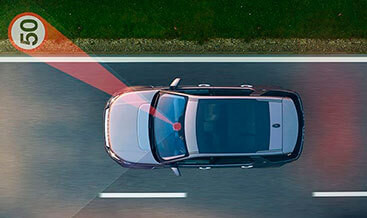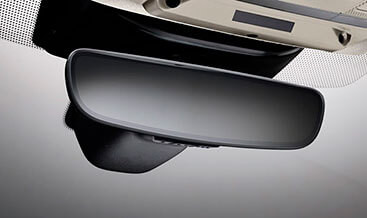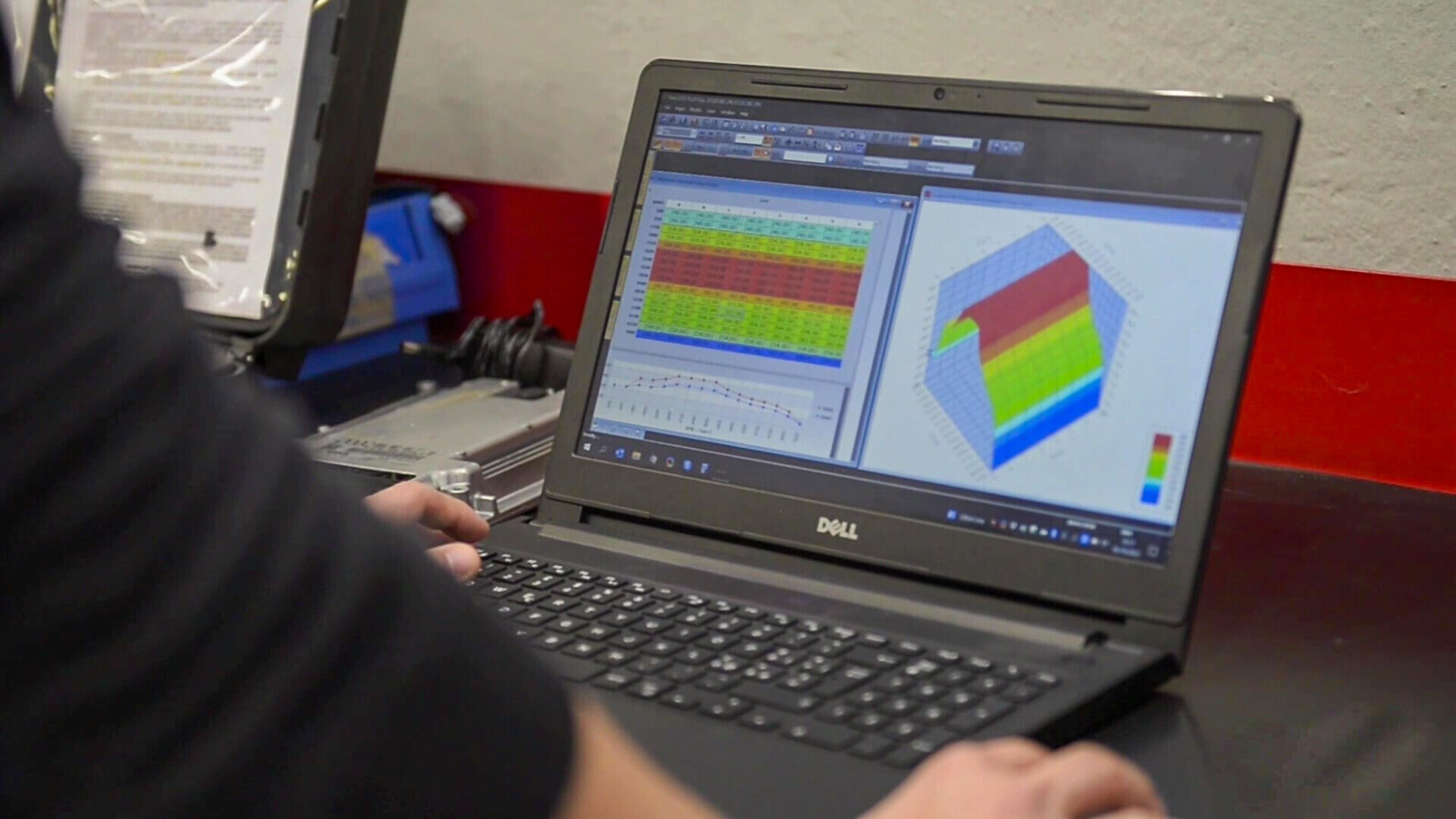Discovery Sport: Enhance Safety With TSR and DDM Activation

Discovery Sport Traffic Sign Recognition and Driver Drowsy Monitor (TSR + DDM) systems offer enhanced safety features. At CARDIAGTECH.NET, we provide expert solutions to activate these life-saving functionalities, ensuring safer and more attentive driving. Unlock the full potential of your Discovery Sport with our advanced activation services.
1. Understanding Traffic Sign Recognition (TSR) in Your Discovery Sport
Traffic Sign Recognition (TSR) is an intelligent safety system designed to increase driver awareness and road safety. By automatically detecting and displaying traffic signs, TSR helps drivers stay informed about speed limits, warnings, and other important road information. This technology minimizes the risk of missing crucial signs, especially in unfamiliar or challenging driving conditions.
1.1 How TSR Works
TSR systems utilize a forward-facing camera, typically mounted near the rearview mirror, to capture images of traffic signs. Advanced image processing algorithms then identify and interpret these signs. The recognized information is displayed to the driver through the instrument cluster or the head-up display (HUD), providing real-time updates on changing road conditions.
1.2 Benefits of TSR
- Enhanced Awareness: TSR keeps drivers constantly updated on speed limits and other important signs, reducing the risk of unintentional violations.
- Improved Safety: By providing timely information, TSR helps drivers make informed decisions, enhancing overall road safety.
- Reduced Stress: TSR can alleviate the mental burden of constantly scanning for traffic signs, particularly on long journeys.
- Adaptive Speed Limiter (ASL) Integration: When paired with ASL, TSR can automatically adjust the vehicle’s speed to match detected speed limits, further enhancing safety and convenience.
 Discovery Sport Traffic Sign Recognition system uses a forward-facing camera to detect and display traffic signs, enhancing driver awareness and road safety.
Discovery Sport Traffic Sign Recognition system uses a forward-facing camera to detect and display traffic signs, enhancing driver awareness and road safety.
1.3 TSR Accuracy and Limitations
While TSR systems are highly accurate, they are not infallible. Factors such as poor weather conditions, obstructed views, or damaged signs can affect their performance. It’s essential for drivers to remain vigilant and not solely rely on TSR for traffic sign information. A study by the AAA Foundation for Traffic Safety found that TSR systems correctly identified traffic signs approximately 90% of the time under ideal conditions. However, this accuracy rate can decrease in adverse weather or when signs are partially obscured.
2. The Importance of Driver Drowsy Monitoring (DDM)
Driver Drowsy Monitoring (DDM) is a critical safety feature designed to prevent accidents caused by driver fatigue. Drowsiness significantly impairs reaction time, judgment, and overall driving ability, making it as dangerous as drunk driving. DDM systems actively monitor the driver’s behavior to detect signs of fatigue and provide timely warnings, helping prevent potentially life-threatening situations.
2.1 How DDM Works
DDM systems employ various technologies to assess the driver’s alertness level. These include:
- Facial Monitoring: Cameras track eye movements, blinking frequency, and head position to detect signs of drowsiness.
- Steering Input Analysis: Sensors monitor steering wheel movements for erratic or inconsistent patterns indicative of fatigue.
- Vehicle Behavior Analysis: The system analyzes lane deviations, speed fluctuations, and other vehicle movements to identify signs of impaired driving.
2.2 Benefits of DDM
- Accident Prevention: By detecting and alerting drivers to drowsiness, DDM systems can significantly reduce the risk of fatigue-related accidents.
- Early Warning System: DDM provides timely warnings, allowing drivers to take corrective action, such as pulling over for a rest.
- Increased Awareness: DDM can help drivers recognize their personal fatigue patterns and take proactive measures to prevent drowsiness.
- Improved Overall Safety: By addressing a major cause of accidents, DDM contributes to a safer driving environment for everyone.
2.3 DDM Effectiveness and Considerations
Studies have shown that DDM systems can significantly reduce the risk of fatigue-related accidents. The National Highway Traffic Safety Administration (NHTSA) estimates that driver fatigue is a factor in approximately 100,000 crashes each year, resulting in 1,550 deaths and 71,000 injuries. DDM systems offer a proactive approach to combatting this issue. While DDM systems are effective, they are not a substitute for adequate rest. Drivers should prioritize getting sufficient sleep before embarking on long journeys and take regular breaks to avoid fatigue.
3. Integrating TSR and DDM for Enhanced Safety
The combination of TSR and DDM provides a comprehensive safety solution for drivers. TSR enhances awareness of road conditions, while DDM addresses the critical issue of driver fatigue. Together, these technologies create a safer and more attentive driving experience, reducing the risk of accidents and promoting overall road safety.
3.1 Synergistic Benefits
- Comprehensive Safety Net: TSR and DDM work together to address both external factors (road conditions) and internal factors (driver fatigue) that can contribute to accidents.
- Redundancy: If one system misses a potential hazard, the other can provide a backup, ensuring a higher level of safety.
- Proactive Risk Mitigation: Both TSR and DDM are proactive systems that actively monitor and alert drivers to potential dangers, rather than simply reacting to events.
3.2 Real-World Applications
Imagine driving on a long highway at night. TSR keeps you informed of changing speed limits, while DDM monitors your alertness level. If you start to feel drowsy, DDM alerts you to take a break before your driving ability is compromised. This integrated approach provides a safety net that can prevent accidents and save lives.
4. Activating TSR and DDM in Your Discovery Sport: A Step-by-Step Guide
Activating TSR and DDM in your Discovery Sport can significantly enhance your vehicle’s safety features. At CARDIAGTECH.NET, we offer professional activation services to ensure seamless integration and optimal performance. Here’s a step-by-step guide to the activation process:
4.1 Prerequisites
Before initiating the activation, ensure your Discovery Sport meets the following requirements:
- Forward-Facing Camera: The vehicle must be equipped with a factory-installed forward-facing camera system. This camera is essential for both TSR and DDM to function correctly.
- Factory Navigation System: TSR works optimally with the factory navigation system, as it utilizes map data for accurate sign recognition.
- Compatible Model Year: Ensure your Discovery Sport is a compatible model year. Our services primarily cater to 2020 and newer models.
4.2 The Activation Process with CARDIAGTECH.NET
- VIN Verification: Contact us at CARDIAGTECH.NET with your Vehicle Identification Number (VIN). This allows us to verify compatibility and ensure the correct activation files are used. You can reach us via Whatsapp at +1 (641) 206-8880.
- Order Confirmation: Once compatibility is confirmed, proceed with the online order and secure payment through PayPal.
- Remote Access Setup: Install TeamViewer on your computer. This software allows our technicians to remotely access your vehicle’s system for activation. Provide us with your TeamViewer ID and password.
- Vehicle Connection: Ensure your vehicle is parked in a safe location with the ignition ON. Connect the ENET adapter to your car’s OBD2 port and your computer. We recommend using the JLR ENET WIFI Adapter available at CARDIAGTECH.NET for reliable connectivity.
- Remote Activation: Our certified technicians will remotely access your vehicle and activate the TSR and DDM features. This process typically takes between 30 to 60 minutes.
- Enjoy Enhanced Safety: Once the activation is complete, you can immediately enjoy the benefits of TSR and DDM, enhancing your driving safety and awareness.
4.3 Troubleshooting
In the rare event of any issues during the activation process, our technical support team is available to assist you. Contact us via Whatsapp at +1 (641) 206-8880 for immediate support.
5. The Technical Aspects: How TSR and DDM Interact with Your Vehicle’s Systems
Understanding the technical aspects of how TSR and DDM interact with your vehicle’s systems can provide valuable insight into their functionality and benefits. These systems integrate with various components of your Discovery Sport to provide a comprehensive safety solution.
5.1 TSR System Integration
The TSR system integrates with the following vehicle components:
- Forward-Facing Camera: Captures images of traffic signs.
- Image Processing Unit: Analyzes the captured images to identify and interpret traffic signs.
- Navigation System: Provides map data for accurate sign recognition and contextual information.
- Instrument Cluster/HUD: Displays the recognized traffic signs to the driver.
- Adaptive Speed Limiter (ASL): Adjusts the vehicle’s speed based on the detected speed limits (if equipped and activated).
5.2 DDM System Integration
The DDM system integrates with the following vehicle components:
- Facial Monitoring Camera: Tracks eye movements, blinking frequency, and head position.
- Steering Angle Sensor: Monitors steering wheel movements for erratic patterns.
- Vehicle Speed Sensor: Detects speed fluctuations.
- Lane Departure Warning System: Monitors lane deviations.
- Driver Alert System: Provides audible and visual warnings to the driver.
5.3 Communication Protocols
TSR and DDM systems communicate with other vehicle components using Controller Area Network (CAN) bus protocols. CAN bus is a robust and reliable communication network commonly used in modern vehicles to facilitate data exchange between various electronic control units (ECUs).
6. Maintaining and Optimizing Your TSR and DDM Systems
To ensure optimal performance and longevity of your TSR and DDM systems, regular maintenance and occasional optimization are essential. Here are some key tips:
6.1 Regular Maintenance
- Clean the Forward-Facing Camera: Keep the forward-facing camera lens clean and free from obstructions. Dirt, debris, or snow can impair the camera’s ability to accurately detect traffic signs and monitor driver behavior.
- Check System Settings: Periodically review the system settings in your vehicle’s infotainment system. Ensure that TSR and DDM are enabled and configured according to your preferences.
- Software Updates: Keep your vehicle’s software up to date. Manufacturers often release software updates that improve the performance and accuracy of safety systems.
6.2 Optimization Tips
- Proper Camera Calibration: Ensure the forward-facing camera is properly calibrated. Misalignment can affect the accuracy of TSR and DDM. If you suspect misalignment, consult a qualified technician.
- Ambient Lighting: Optimize ambient lighting conditions. Excessive glare or darkness can affect the performance of the facial monitoring camera used by the DDM system.
- Driver Awareness: Remember that TSR and DDM are辅助 systems and not substitutes for attentive driving. Always remain vigilant and aware of your surroundings.
7. Real-World Benefits: Case Studies and Testimonials
To illustrate the real-world benefits of TSR and DDM, let’s explore some case studies and testimonials from Discovery Sport owners who have experienced these technologies firsthand:
7.1 Case Study 1: Preventing a Speeding Ticket
John, a Discovery Sport owner from California, recounts how TSR helped him avoid a speeding ticket: “I was driving on a highway in an unfamiliar area and didn’t realize the speed limit had changed. The TSR system immediately displayed the new speed limit on my instrument cluster, giving me enough time to adjust my speed and avoid a potential ticket.”
7.2 Case Study 2: Averting a Fatigue-Related Accident
Sarah, a long-distance commuter from Texas, shares her experience with DDM: “I was driving home after a long day at work and started feeling drowsy. The DDM system detected my fatigue and issued a warning, prompting me to pull over and take a break. I’m convinced that DDM prevented me from having an accident.”
7.3 Testimonial: Enhanced Peace of Mind
“Since activating TSR and DDM in my Discovery Sport, I feel much safer and more confident on the road,” says Mark, a Discovery Sport owner from Florida. “These systems provide an extra layer of protection and peace of mind, especially on long journeys.”
8. Addressing Common Concerns and Misconceptions
Despite their proven benefits, TSR and DDM systems are sometimes subject to misconceptions and concerns. Let’s address some of the most common ones:
8.1 Misconception 1: TSR and DDM are Unreliable
While no system is perfect, TSR and DDM technologies have significantly improved in recent years. Modern systems are highly accurate and reliable, providing valuable assistance to drivers.
8.2 Misconception 2: TSR and DDM are Intrusive
Some drivers worry that DDM systems may be intrusive, constantly monitoring their behavior. However, DDM systems are designed to be unobtrusive and only issue warnings when signs of fatigue are detected.
8.3 Concern: Cost of Activation
The cost of activating TSR and DDM may be a concern for some vehicle owners. However, the potential benefits in terms of safety and accident prevention far outweigh the cost. At CARDIAGTECH.NET, we offer competitive pricing and flexible payment options to make these safety features accessible to more drivers. The cost of activation is US$149.00.
9. Why Choose CARDIAGTECH.NET for Your TSR and DDM Activation?
When it comes to activating TSR and DDM in your Discovery Sport, choosing the right service provider is crucial. CARDIAGTECH.NET offers several key advantages:
- Expertise: Our team of certified technicians has extensive experience in activating TSR and DDM systems in Discovery Sport vehicles.
- Reliability: We use only the highest quality software and equipment to ensure seamless integration and optimal performance.
- Remote Activation: Our remote activation service allows you to activate TSR and DDM from the comfort of your own home or office.
- Customer Support: We provide exceptional customer support, with technicians available to assist you throughout the activation process. Contact us via Whatsapp at +1 (641) 206-8880.
- Competitive Pricing: We offer competitive pricing on our activation services, making enhanced safety features accessible to more drivers.
10. The Future of Automotive Safety: The Role of TSR and DDM
TSR and DDM represent just the beginning of a revolution in automotive safety. As technology continues to advance, we can expect even more sophisticated and effective safety systems to emerge.
10.1 Emerging Technologies
- Advanced Driver-Assistance Systems (ADAS): ADAS technologies, such as adaptive cruise control, lane keeping assist, and automatic emergency braking, are becoming increasingly common in modern vehicles.
- Artificial Intelligence (AI): AI is being used to develop more intelligent and responsive safety systems that can anticipate and react to potential hazards in real-time.
- Vehicle-to-Vehicle (V2V) Communication: V2V technology allows vehicles to communicate with each other, sharing information about road conditions, traffic, and potential hazards.
10.2 The Vision of Zero Accidents
The ultimate goal of automotive safety research is to eliminate accidents altogether. By combining advanced technologies like TSR, DDM, ADAS, and V2V communication, we can create a future where roads are safer for everyone.
FAQ: Frequently Asked Questions About TSR and DDM
- What is Traffic Sign Recognition (TSR)? TSR is a system that detects and displays traffic signs, such as speed limits, to the driver.
- What is Driver Drowsy Monitoring (DDM)? DDM is a system that monitors the driver’s behavior for signs of fatigue and issues warnings when drowsiness is detected.
- Is TSR and DDM activation available for all Discovery Sport models? Activation is primarily available for 2020 and newer models equipped with a forward-facing camera and factory navigation system.
- How do I know if my Discovery Sport is compatible? Contact CARDIAGTECH.NET with your VIN, and we will verify compatibility.
- Can TSR and DDM be activated remotely? Yes, CARDIAGTECH.NET offers remote activation services.
- What equipment do I need for remote activation? You need a computer, a stable internet connection, the ENET adapter, and TeamViewer installed.
- How long does the activation process take? The activation process typically takes between 30 to 60 minutes.
- What if I encounter issues during the activation process? Contact our technical support team via Whatsapp at +1 (641) 206-8880 for assistance.
- Are TSR and DDM systems reliable? Modern TSR and DDM systems are highly accurate and reliable, providing valuable assistance to drivers.
- Do TSR and DDM systems replace attentive driving? No, TSR and DDM are辅助 systems and not substitutes for attentive driving. Always remain vigilant and aware of your surroundings.
Ready to enhance the safety of your Discovery Sport? Contact CARDIAGTECH.NET today to activate TSR and DDM! Our expert technicians are standing by to assist you. Reach us via Whatsapp at +1 (641) 206-8880 or visit our website at CARDIAGTECH.NET to learn more. Our address is 276 Reock St, City of Orange, NJ 07050, United States.




